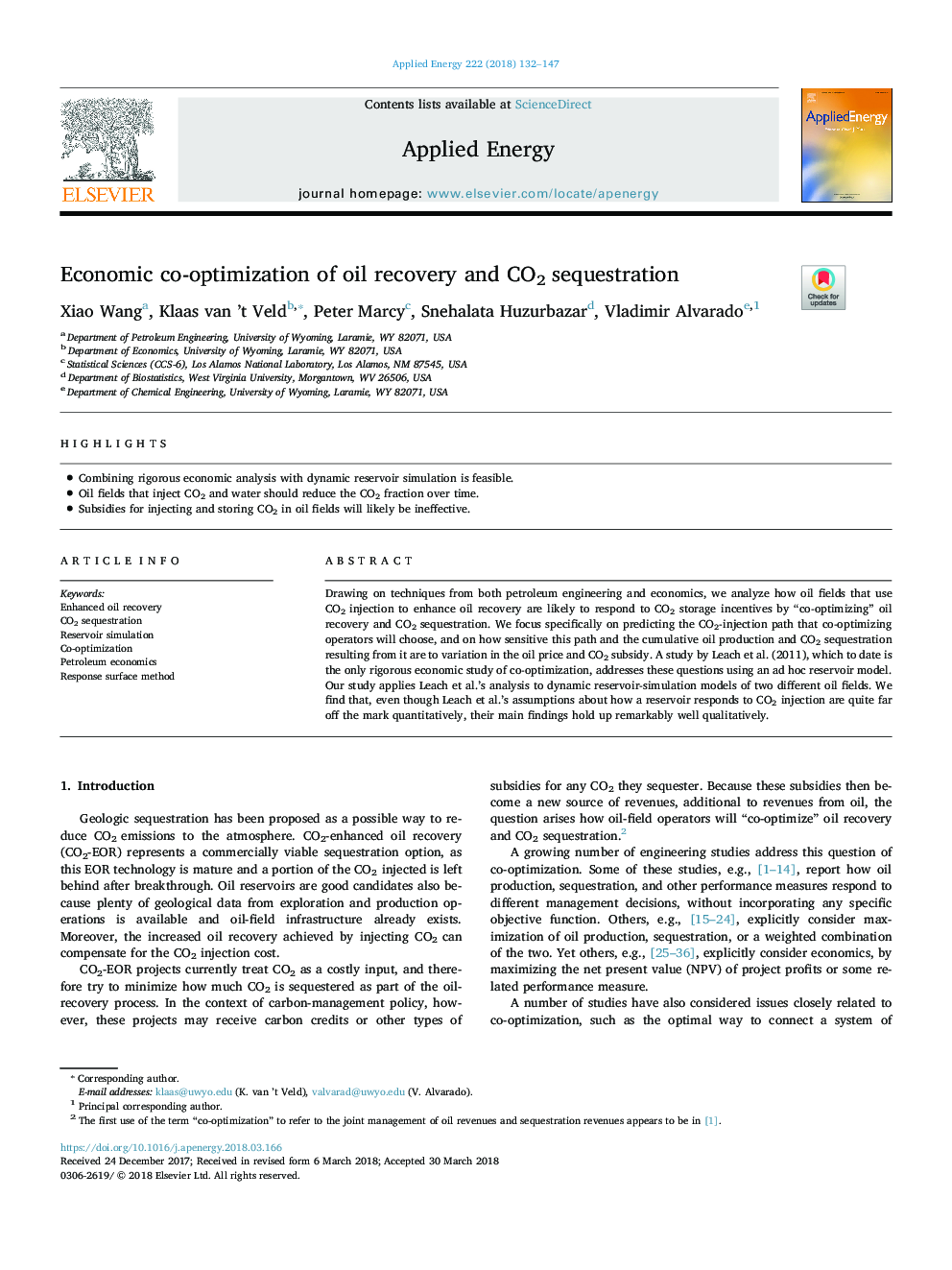| Article ID | Journal | Published Year | Pages | File Type |
|---|---|---|---|---|
| 6680080 | Applied Energy | 2018 | 16 Pages |
Abstract
Drawing on techniques from both petroleum engineering and economics, we analyze how oil fields that use CO2Â injection to enhance oil recovery are likely to respond to CO2 storage incentives by “co-optimizing” oil recovery and CO2 sequestration. We focus specifically on predicting the CO2-injection path that co-optimizing operators will choose, and on how sensitive this path and the cumulative oil production and CO2 sequestration resulting from it are to variation in the oil price and CO2 subsidy. A study by Leach et al. (2011), which to date is the only rigorous economic study of co-optimization, addresses these questions using an ad hoc reservoir model. Our study applies Leach et al.'s analysis to dynamic reservoir-simulation models of two different oil fields. We find that, even though Leach et al.'s assumptions about how a reservoir responds to CO2Â injection are quite far off the mark quantitatively, their main findings hold up remarkably well qualitatively.
Keywords
Related Topics
Physical Sciences and Engineering
Energy
Energy Engineering and Power Technology
Authors
Xiao Wang, Klaas van 't Veld, Peter Marcy, Snehalata Huzurbazar, Vladimir Alvarado,
